Starbucks sells more than coffee. The "four labels" are the focus!
Recently, Xi Jinping visited the United States and came to Seattle, where he was served not wine but Starbucks coffee, which made Starbucks "hot" again. How did this coffee chain break into the mainland Chinese market where there was no "coffee culture" and have opened more than 1700 stores so far? The answer may be to rely on the four "labels" of coffee roasters, third Space, community interaction and partners.
Starbucks plans to double its stores in China in the next four years. At a time of rapid product consumption, Starbucks founder Howard asked how Starbucks maintains the unique charm of its brand. "We work with people through coffee, not just a company that provides coffee for people," Schultz said. " At the recent Starbucks sharing meeting on "the significance of Brands to City Life", many media, such as Starbucks and snack Dai, discussed how brands affect life.
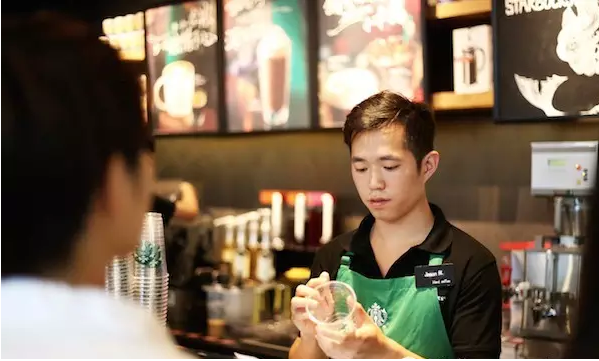
From the coffee roaster to the "third Space"
Now, as long as you want to go to decent places to meet guests, mobile offices, chat with friends, rest with children, Starbucks has become the first choice. Starbucks'"third space" has unwittingly affected city life.
Many people may not know that in the early days, Starbucks did not sell coffee, but only coffee beans, providing high-quality Elaraby coffee beans, teaching consumers to brew coffee at home. Until later, Howard went to Italy and felt the local coffee culture-bringing coffee lovers together doesn't have to be at home, and there is a bond between people and coffee.
Howard brought the idea back to the United States, but without the support of Starbucks' original shareholders, he started a coffee-tasting company called Tiantian Coffee. It wasn't long before Howard bought Starbucks, and there is now Starbucks'"third space"-per person, every cup, every community.
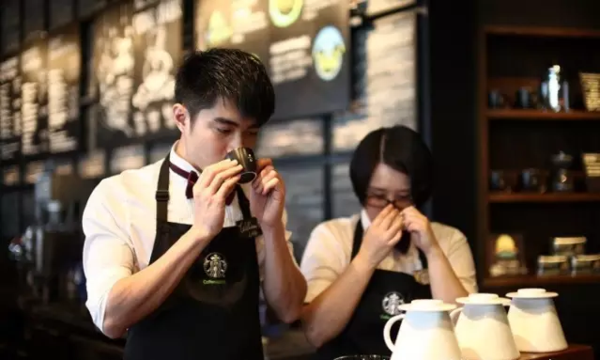
At a recent sharing meeting on "the significance of Brands to City Life", Wang Xingrong, Starbucks' communications director in China, said that coffee is the core of Starbucks' core, and Starbucks coffee beans have been "carefully selected." "I have also been to Sumatra, personally collected coffee berries and peeled them, took out the seeds of coffee berries to dry, and finally formed coffee fruits. I picked about a bucket of coffee all afternoon, with very little coffee, and my hands were worn out. I was bitten by mosquitoes, so the life of coffee farmers was very hard. When I came back from Sumatra to drink coffee, I would not drink half and throw half of it. I realized that every grain was the hard work of the farmers."
Of course, to become the third space, Howard believes that the romance in the hearts of customers, the luxury that customers can afford, and an oasis that provides customers with a moment of peace and leisurely social interaction are indispensable conditions for becoming the third space.
The establishment of this "third space" has precisely formed Starbucks' fan economy. Starbucks fans love everything about Starbucks, including the Starbucks City Cup. In the sharing meeting, they mostly mentioned that Starbucks City Cup is a must-have collection for every Starbucks fan. Some Starbucks fans even go to any city in the world to look for Starbucks. What they want is to feel at home.
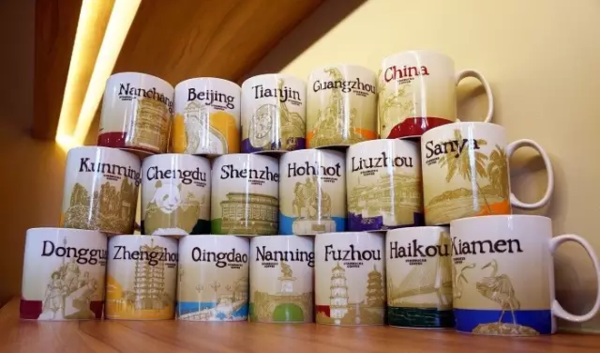
Community integration starts with the environment and people around you.
In fact, Starbucks in store design, each store is not a unified design, it is integrated with the community as a whole store.
Wang Xingrong said that Starbucks in the Guangzhou Tower, for example, is located in landmark buildings such as the Guangzhou Tower. The Guangzhou Tower uses a metal facade, so Starbucks has also designed a metal facade consistent with the Guangzhou Tower to integrate the store with the surrounding environment. According to her, Starbucks' first store in the United States actually originated in the community. The store in Pike Market is a market for selling fish and vegetables, that is, the center of the community, because customers go there every day to buy fish, vegetables and secondhand goods. There, Starbucks has become a part of customers' daily life, which is also a very important origin gene to understand Starbucks' humanistic feelings.
In Howard's book "injecting the Heart", there is a great emphasis on "feelings". He believes that customers come to Starbucks to soothe the mood, steal leisure from the busy, take a nap and relax. So the layout of Starbucks stores is carefully designed, even the taste can only have a strong aroma of coffee, anything that will affect the aroma of coffee, such as tobacco, partners' perfume, soup, sliced five-spiced beef or other stewed food. won't be in the store.
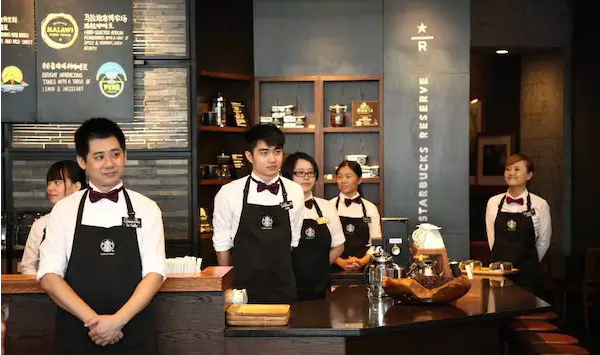
Starbucks'"secret weapon" is partners.
In fact, Starbucks' unique brand charm is their "partner". According to Wang Xingrong, Starbucks is fully owned, and every Starbucks employee in China, including part-time partners who contribute more than 360 hours in the fiscal year, can own Starbucks coffee bean stock. they call their employees partners, and the company is like their own family, whether between partners, partners and customers, or customers and customers, they all connect with each other through coffee. This is the core emotional connection of Starbucks.
In many modern enterprises, when faced with an economic downturn, the first thing is to cut benefits or lay off staff, but for Starbucks, it does not do so. Howard believes that by treating employees as family members, they will be loyal to the company and give everything they have. Put yourself in the employee's shoes, and the employee will think of you. High employee mobility in turn affects customer loyalty. For example, some customers come so frequently that baristas know what they want to drink as soon as they walk in the door.
Starbucks hopes that by doing it bit by bit, we will give sincere service to every customer every time, make our own efforts to every new store, and "seriously grasp" every market opportunity. After years of polishing and establishing word-of-mouth, it is possible to turn a "good local brand" into a national well-known brand, and the brand still maintains close ties with customers and the community.
Important Notice :
前街咖啡 FrontStreet Coffee has moved to new addredd:
FrontStreet Coffee Address: 315,Donghua East Road,GuangZhou
Tel:020 38364473
- Prev
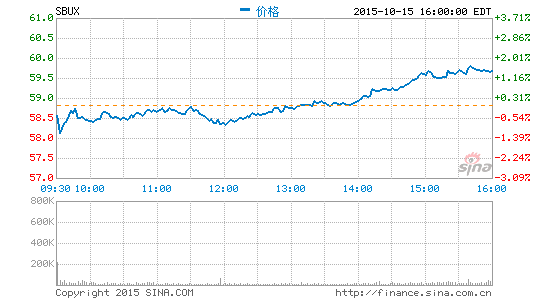
Starbucks wants to conquer coffee giant Italy Starbucks wants to open a store in Italy?
In the early morning of the 16th, Reuters reported that Starbucks (59.69,0.87, 1.48%), the world's largest coffee chain, is negotiating with a local partner to introduce its brand to Italy, which is famous for its coffee culture.
- Next
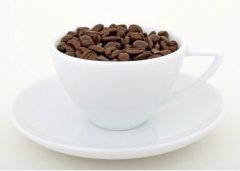
Analysis on the Prospect of China's Coffee Industry what is the current situation of the domestic coffee industry?
Introduction: maturity is not the aging of the heart, but tears in the eyes, but also can keep smiling. The pleasure of coffee lies in its taste, utility and atmosphere. More and more people choose coffee to accompany themselves to spend a lot of cozy time. Just made coffee, send out this rich fragrance, that kind of attractive aroma, fresh and intoxicating. After getting up in the morning, have a drink to wake up and work during the day.
Related
- What brand of black coffee is the most authentic and delicious? what are the characteristics of the flavor of the authentic Rose Summer Black Coffee?
- Introduction to the principle and characteristics of the correct use of mocha pot A detailed course of mocha pot brewing coffee is described in five steps.
- Which is better, decaf or regular coffee? how is decaf made?
- How much is a bag of four cat coffee?
- How about four Cat Coffee or Nestle Coffee? why is it a cheap scam?
- Which is better, Yunnan four Cats Coffee or Nestle Coffee? How about cat coffee? is it a fake scam? why is it so cheap?
- How about Cat Coffee? what grade is a hoax? which instant coffee tastes better, four Cat Coffee, Nestle Coffee or G7 coffee?
- Process flow chart of coffee making-Starbucks coffee making process what coffee tastes good at Starbucks
- The top ten best coffee beans in the world Rose summer coffee or Tanzanian coffee tastes good
- Yunnan four cat coffee is good to drink?_four cat coffee is a big brand? four cat blue mountain coffee is fake?

